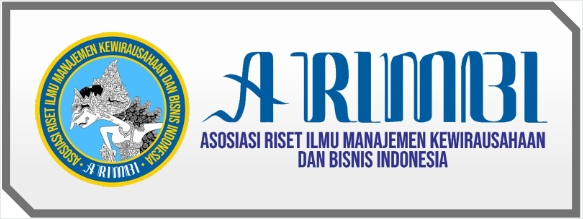Performance Measurement in Service and Consultant Company with Balanced Scorecard-AHP
DOI:
https://doi.org/10.30588/jmp.v13i2.1228Abstract
PT XYZ is a services and consulting firm that wants to measure the company's overall performance. Currently, the company only measures financial aspects and cannot describe the company's overall performance. It was conducted to measure the company’s performance by identifying key metrics from three perspectives: financial, customer, internal processes, and learning and growth. Underpinned by the Analytical Hierarchy Process weighting system, the Objective Matrix, and the Traffic Light System rating system, the company's performance achieved an overall index score of 9.15. Of a total of 30 KPIs, 10 are yellow KPIs, which means the company's performance is in line with realistic goals, and the remaining 20 are green KPIs. It shows that the company's overall performance is in line with company goals. The 30 KPIs consist of 4 KPIs for financial, 8 KPIs for customer, 12 KPIs for business internal process, and 6 KPIs for learning and growth.
References
Abdurrachman, Givan, B., Amalia, R., & Riesmiyantiningtias, N. (2022). Implementation of the Balanced Scorecard as a measuring tool for company performance. Intl Journal of Educational Research & Social Sciences.
Adianto, Saryatmo, M. A., & Gunawan, A. S. (2014). Analisa Pengukuran Kinerja dengan Menggunakan Metode Performance Prism dan Scoring Objective Matrix (OMAX) pada PT. BPAS. Sinergi, 61-70. Diambil kembali dari http://publikasi.mercubuana.ac.id/index.php/sinergi
Alex, T., & Tabesh, P. (2022). Thirty years with the balanced scorecard: What we have learned. Business Horizon. doi:https://doi.org/10.1016/j.bushor.2022.03.005
Anjomshoae, A., Hassan, A., Kunz, N., Wong, K., & de Leeuw, S. (2019). Toward a dynamic balanced scorecard model for humanitarian relief organization's performance management. J. Humanit. Logist. Supply Chain Manage. 7 (2), 194-218.
Asiaei, K., & Bontis, N. (2019). Using a balanced scorecard to manage corporate social responsibility. Knowl Process Manag., 1-9. doi:10.1002/kpm.1616
Cahyawati, A. N., Pratikno, & Soenoko, R. (2013). Analisis Pengukuran Kinerja Rumah Sakit dengan Menggunakan Metode Performance Prism. JEMIS, 1-7.
De Andrade Guerra, J., Garcia, J., de Andrade Lima, M., Barbosa, S., Heerdt, M., & Berchin, I. (2018). A proposal of a balanced scorecard for an environmental education program at universities. Journal of Cleaner Production, 172, 167-1690.
Dekrita, Y. A., Yunus, R., Citta, A. B., & Yamin, M. (2018). Integration of Balanced Scorecard and Analytical Hierarchy Process as a Tool for Determining the Priority of the Program Strategy: Case Study in Dr.Tc.Hillers Maumere Hospital. 3rd International Conference on Accounting, Management and Economics 2018. Indonesia: Atlantis Press.
Hanuma, S., & Kiswara, E. (2011). Analisis Balance Scorecard Sebagai Alat Pengukur Kinerja Perusahaan (Studi Kasus Pada PT. Astra Honda Motor). Jurnal Akuntansi, 1-24.
Juiz, C., Ricardo, C.-P., & Gómez, B. (2018). Cascading ISO/IEC 38500 based Balanced Score Cards to improve board accountability. Procedia Computer Science 138 (hal. 417-424). Elsevier Ltd. doi:10.1016/j.procs.2018.10.059
Kefe, I. (2019). The Determinan of Performance Measures by Using a Balanced Scorecard Framework. Foundations of Management, 11(1), 43-56. doi:10.2478/fman-2019-0004
Kopia, J., Kompalla, A., Buchmüller, M., & Heinemann, B. (2017). Performance Measurement of Management System Standards Using the Balanced Scorecard. Amfiteatru Economic, 9(11), 981-1002.
Nouri, A. F., Shafiei, N. M., & Olfat, L. (2019). Developing the framework of sustainable service supply chain balanced scorecard (SSSC BSC). International Journal of Productivity and Performance Management, 68 (1), 148-170. doi:https://doi.org/10.1108/IJPPM-04-2018-0149
Okfalisa, Anugrah, S., Anggraini, W., Absor, M., & Fauzi, S. S. (2018). Integrated Analytical Hierarchy Process and Objective Matrix in Balanced Scorecard Dashboard Model for Performance Measurement. TELKOMNIKA, 27013-2711.
Pérez, C. A., Montequín, V. R., Fernández, F. O., & Balsera, J. V. (2017, 9). Integrating Analytic Hierarchy Process (AHP) and Balanced Scorecard (BSC) Framework for Sustainable Business in a Software Factory in the Financial Sector. Sustainability, 486. doi:10.3390/su9040486
Quezada, L., Reinao, E., Palominos , P., & Oddershede , A. (2019). Measuring Performance Using SWOT Analysis and Balanced Scorecard. Procedia Manufacturing, 39 (hal. 786-793). Chicago, USA: Elsevier Ltd. doi:10.1016/j.promfg.2020.01.430
Saaty, T. L. (1999). How to Make a Decision: The Analytic Hierarchy Process. Europian Journal of Operation Research, 9-26. doi: https://doi.org/10.1016/0377-2217(90)90057-I
Sardjono, W., Selviyanti, E., & Perdana, W. (2019). The application of the factor analysis method to determine the performance of IT implementation in companies based on the IT balanced scorecard measurement method. J. Phys.: Conference Series. 1538 012026.
Seungbun, L., Brownlee, E., Yongjae, K., & Soonhwan, L. (2017). Ticket Sales Outsourcing Performance Measures Using Balanced Scorecard and Analytical Hierarchy Process Combined Model. Sport Marketing Quarterly, 110-120.
Silvestre, W., & Fonseca, A. (2020). Integrative sustainable intelligence: A holistic model to integrate corporate sustainability strategies. Corporate Social Responsibility and Environmental Management, 27(4), 1578-1590. doi:https://doi.org/10.1002/csr.1906
Supriyono, R. (2019). Manajemen Biaya (Suatu Reformasi Pengelolaan Bisnis). Yogyakarta: BPFE.
Tubis, A., & Werbińska-Wojciechowska, S. (2017). Balanced Scorecard Use in Passenger Transport Companies Performing at Polish Market. Procedia Engineering 187, 538-547. doi:10.1016/j.proeng.2017.04.412
Downloads
Published
How to Cite
Issue
Section
License
Copyright (c) 2024 Belia Afifah, Syakia Muflihat

This work is licensed under a Creative Commons Attribution 4.0 International License.
Authors who publish with Jurnal Maksipreneur agree to the following terms:
Authors retain copyright and grant the Jurnal Maksipreneur right of first publication with the work simultaneously licensed under a Creative Commons Attribution 4.0 International License that allows others to share (copy and redistribute the material in any medium or format) and adapt (remix, transform, and build upon the material) the work for any purpose, even commercially with an acknowledgment of the work's authorship and initial publication in Jurnal Maksipreneur.
Authors are able to enter into separate, additional contractual arrangements for the non-exclusive distribution of the journal's published version of the work (e.g., post it to an institutional repository or publish it in a book), with an acknowledgment of its initial publication in Jurnal Maksipreneur. Authors are permitted and encouraged to post their work online (e.g., in institutional repositories or on their website) prior to and during the submission process, as it can lead to productive exchanges, as well as earlier and greater citation of published work (See The Effect of Open Access).























